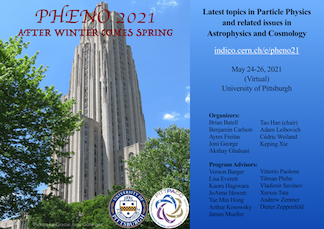Speaker
Description
The high-intensity setup and detector performance make the NA62 experiment at CERN particularly suited for searching new physics effects from different scenarios involving feebly interacting particles in the MeVGeV mass range.
A search for the K+→π+X decay, where X is a long-lived feebly interacting particle, is performed through an interpretation of the K+→π+νν¯ analysis of data collected in 2017-2018. Model- dependent upper limits are obtained assuming X to be an axion-like particle with dominant fermion couplings or a dark scalar mixing with the Standard Model Higgs. Upper limits set on the branching ratio BR(K+→π+X) improve on current limits for mX below 260 MeV/c2 and rest lifetimes above 100 ps.
A search for K+→μ+νX, where X is a massive invisible particle, is performed using the 2016-2018 data set. The X particle is considered a scalar or vector hidden sector mediator decaying to an invisible final state. Upper limits of the decay branching fraction for X masses in the range 10-370 MeV/c2 are reported for the first time, ranging from O(10−5) to O(10−7).
A study of a sample of 4×10ˆ9 tagged π0 mesons from K+→π+π0(γ) is performed, searching for the decay of the π0 to invisible particles. No signal is observed in excess of the expected background fluctuations. An upper limit of 4.4×10−9 is set on the branching ratio at 90% C.L. improving on previous results by a factor of 60.

